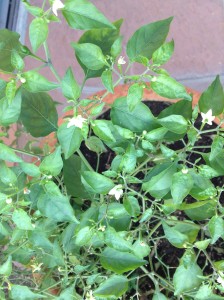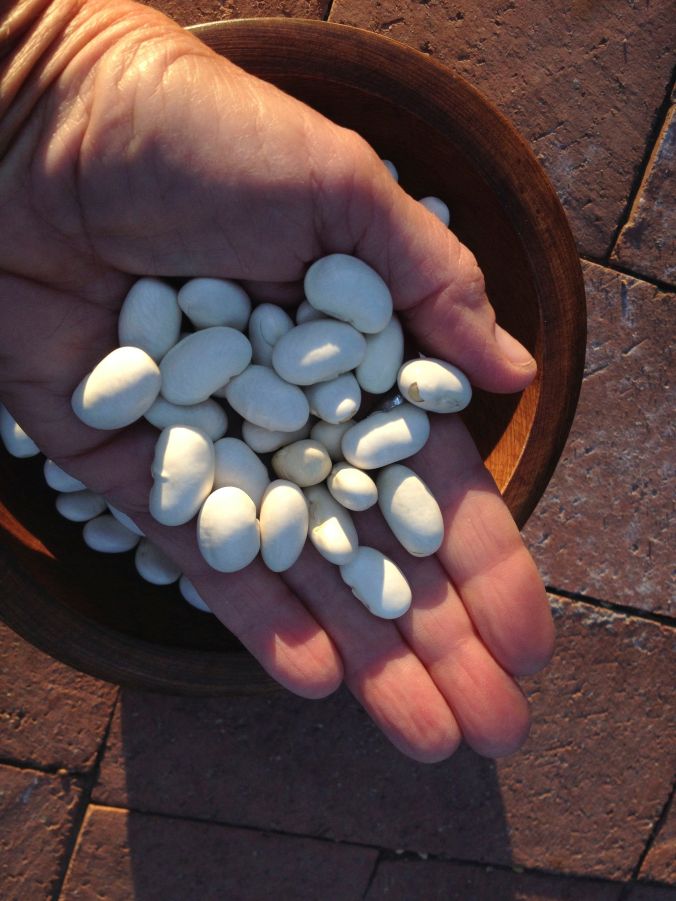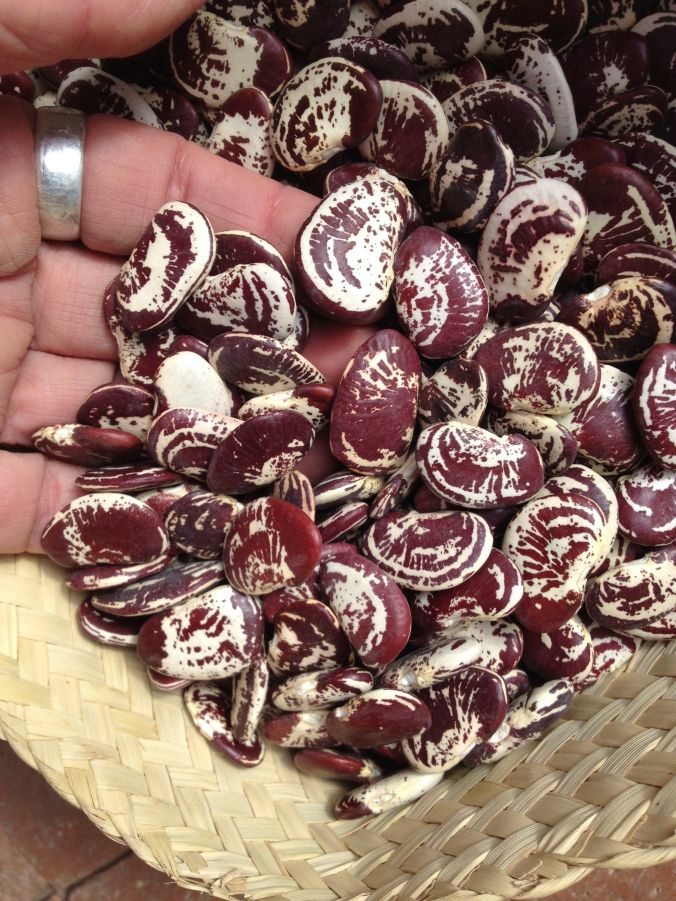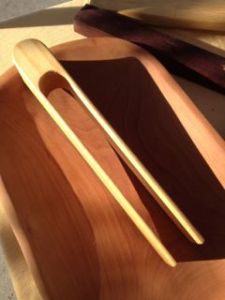It’s show time in the desert–S’oo’ahm masad or “yellow moon” for the Tohono O’odham–the month in which seemingly everything in the Sonoran Desert blooms a glorious yellow, arroyos lined with blooming blue palo verde and mesquite, hillsides covered with paper flower, palo verde and cactus blossoms.
These spiny, possibly-threatening desert plants have amazing nutritious gifts to pollinators and other hungry creatures, including ants, packrats… and humans.
Tia Marta here with an invitation to learn lots more about our many species of Sonoran Desert chollas, how they fit into the fabric of desert life, and how they have been used by traditional people for generations. Come join Tucson Cactus and Succulent Society’s SONORA XI gathering next weekend Friday-Sunday, April 15-17, 2016, for a rich opportunity to enjoy demos, tastes, lectures, and exhibits. You can learn more about this downtown Tucson event (held at HotelTucsonInnSuites) and register at http://www.tucsoncactus.org. On Saturday, April 16, I invite you to attend one of my ethnobotany demonstrations at the open conference. I’ll guide you through careful “hands-on experiences” with edible and useful succulents, complete with some surprising and yummy bites!

Delicious Marinated White Sonora Wheat-berry Salad with Cholla Buds at Mission Garden workshop (MABurgess)
Last weekend we celebrated the beginning of the cholla harvest at Friends of Tucson’s Birthplace’s Mission Garden in a workshop led by Flor de Mayo’s Tia Marta (www.tucsonsbirthplace.org/archives). We explored its ecology, taxonomy, traditional preparation, its culture and archaeological evidence. The class was topped with a feast using cholla buds in several innovative and delectable dishes–one with heirloom White Sonora Wheat. For great cholla recipe ideas, scroll back to an earlier Savor blog post https://savorthesouthwest.wordpress.com/2015/03/13/heres-to-the-budding-desert/. For additional interesting cholla information and dried cholla buds for purchase, check out www.flordemayoarts.com.
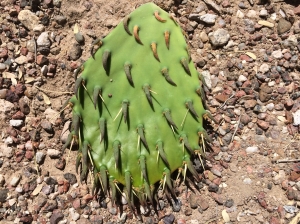
Young new-growth stem of prickly pear in leaf (Opuntia engelmannii) ready for harvesting (MABurgess)
Another desert food staple–worthy of being considered a medicine as it is so effective in balancing bloodsugar–is our own prickly pear. With de-spining and preparation you can enjoy its tangy taste as nopalitos, pickled, stir-fried, or in salads. Enjoy nopal dishes at some of Tucson’s favorite restaurants like Janos’ Downtown Kitchen or Teresa’s Mosaic. Attend the demo nopal preparation and tastes at the SONORA XI Conference….(www.tucsoncactus.org).
Seeing the heirloom winter White Sonora Wheat growing tall and green at Mission Garden, its swelling kernels in the “milk-stage,” I’m envisioning the harvest to come, and to plans for La Fiesta de San Ysidro Labrador, when the wheat, first introduced to S-chuk-Shon by Padre Kino, will be maturing and ready to thresh. My mother’s wonderful caregiver Rosa has introduced us to a delectable recipe she created celebrating both White Sonora Wheat and the fresh vegetables currently available at farmers’ markets. Her recipe for Market Veggie Omelette with White Sonora Wheat follows–light as a souflee.
ROSA’S MARKET VEGGIE OMELETTE w/ WHITE SONORA WHEAT FLOUR
Ingredients:
2 Tbsp heirloom White Sonora Wheat flour
1 lg egg or 2 small eggs
1 cup market vegetables, sautéed in olive oil (shaved carrots, chopped fresh spinach, minced I’itoi’s onions bulb and tops…)
2+ Tbsp org. broth, veg or chicken
salt to taste; butter for curing skillet
Directions:
Saute chopped vegetables in olive oil, then simmer with broth until soft. Allow to cool. Beat eggs with White Sonora Wheat flour. Mix with vegetables. Pre-heat small iron skillet, melt butter, pour in mixture. Let omelette puff. Turn when slightly brown on bottom, then gently brown on reverse. Serve w/salsa fresca or sliced avocados. (Another wonderful variation on her omelette is to add prepared cholla buds!)
Find dry cholla buds at the Flor de Mayo booth at Sunday’s St Philips farmers’ market, at NativeSeeds/SEARCH store, at the San Xavier Farm Coop booth at Thursday’s Santa Cruz market at the Mercado, or at the Tucson Cactus&Succulent Society’s SONORA XI conference next weekend. You can find the freshest greens for Rosa’s Veggie Omelette, including local baby spinach, onions, etc at our many Tucson farmers markets, especially at Tom’s Marana-farm booth at Sunday St Philips market (www.foodinroot.com), or at the Community Food Bank booth at Thursday’s Santa Cruz market at the Mercado. Easily grow your own shallots for the omelette with NativeSeeds/SEARCH’s I’itoi’s onions–the snappy little spreading onion that keeps on giving.
Come witness ever-growing inspirations for your own garden by visiting Mission Garden at the foot of A-Mountain, Tucson–it’s a must! There are wonderful docents there to guide you every Saturday morning now that the weather is warming. In Mission Garden we see examples of cultivated food and native medicine plants that have fed and helped humans in this valley for over 4000 years! With that track record for desert living, chances are these same plants can help support us into an unsure future of hotter and drier weather–with assurance and nurture. We owe inexpressible thanks to those farmers and gardeners who have preceded us!
[For more info about succulent events, tours, happenings, and products, check out http://www.tucsoncactus.org; http://www.flordemayoarts.com; http://www.tucsonsbirthplace.org; http://www.nativeseeds.org, http://www.sanxaviercoop.org]

















